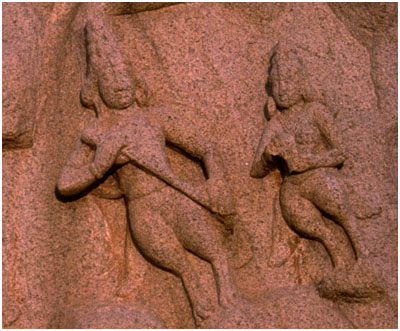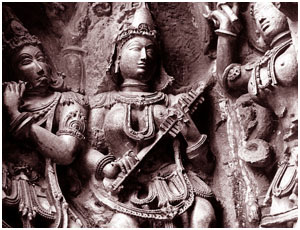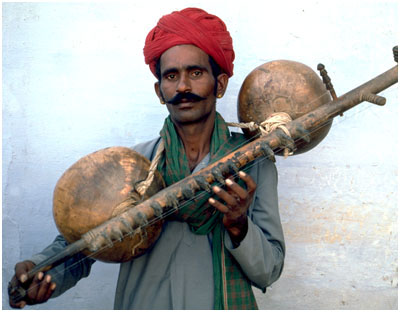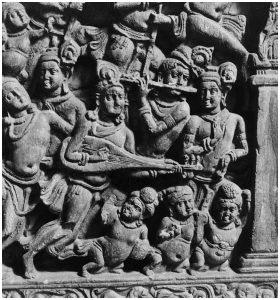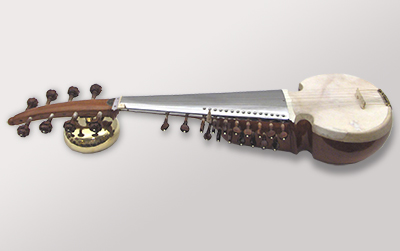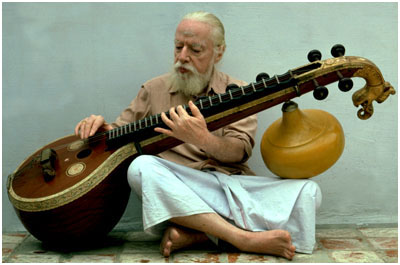An instrument with such a complex making as the South Indian Veena, with its luth shape, its external resonator, all its strings and its twenty-four frets didn't of course appear out of nothing, but is the result of a long evolution which took many centuries. All the transformations of the music during these times and the ceaseless efforts of the instruments makers, of the musicians and of the theoricians to match those evolutions allowed it to grow, step by step, from very simple instruments to its today shape. The successive improvements, hybridizations, and the sometimes radical technical inventions which allowed it to become what it is now will be briefly explained here.
If percussions seemed to be the most ancient music instruments of mankind, the oldest ancestors of the strings instruments are on one side the musical bow, where the mouth is used as a resonator, and on the other side the Idiochord tube Zither, a plain bamboo tube where the husk is cut on its length to make some kind of strings which are raised up at both ends with small wooden sticks working like bridges.
Both those instruments, with dim voices, still in use mostly in Africa, Madagascar and South East Asia, rapidly evolved into more complex ones. The mouth used for the musical bow was replaced by a resonator made out of a gourd or modeled in clay, hung under the bow (e.g. the Villadi Vadyam in Tamil Nadu). The first occurrences of the word "vina" in the Yajur-Veda (Xth Century BC ?) certainly refer to that type of instrument. The adding of more strings turned the musical bow into a simple harp, of which we found iconographic evidences in the Indus Valley's pictogramms (2300 to 1500 BC).
